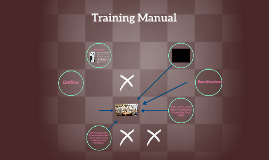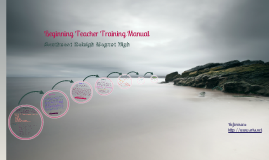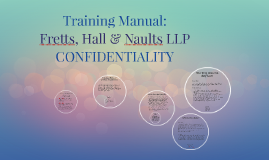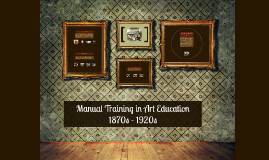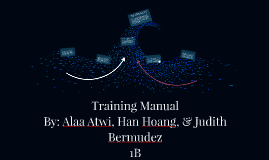Training Manual
Transcript: Power, Current, Voltage, & Energy Series and Parallel Circuits Training Manual By: Alaa Atwi, Han Hoang, & Judith Bermudez 1B Watts measure power. Kilowatt hours measure energy. The power measured is electricity. The energy measured is electricity used in a hour or different time. Energy is a calculation of power and is expressed as power multiplied by time. 3,000W is the power that’s given out by the wind generator. 8kWh is the energy in which the generator gives out. 375 hours is the time. What's the difference between 3000W & 4kWh? Batteries allow storage of electrical energy from the wind-driven generator to keep the home going for four windless days. The batteries deliver direct current electricity, but most home appliances are designed to use alternating current. An inverter changes the DC from the batteries into AC before it enters the home. A circuit breaker protects the batteries from overheating if too much energy is asked for at any single time. Finally, a kilowatt-hour meter is provided to keep track of the amount of electrical energy that has been used. AC and DC Circuits Electric Water Pump: Power - 335W, Energy, 670WH, or .67kWh, Voltage - 120V, Current- 2.79A Circuits Circuits is an interconnection of electrical elements such as resistors, inductors, capacitors, transmission lines, voltage sources, current sources and switches that has a closed loop giving a return path for the current. It is a closed loop where charges can continuously move. The fact that the light bulb lights remain lit is proof that charge is flowing through the light bulb and that an electrical circuit has been made. Microwave: Power - 700W, Energy - 700WH or .7kWh, Voltage - 120V, Current - 5.83A Mini Fridge: Power - 300W, Energy - 900WH or .9kWh, Voltage, 120V, Current - 2.5A Slow Cooker: Power - 200W, Energy - 400 WH, or .4kWh, Voltage - 120V, Current - 1.67A Sewing Machine: Power - 75W, Energy - 75WH, or .075kWh, or 225WH, or .225kWh, Voltage - 120V, Current - .625A Window Fan: Power - 200W, Energy - 200 WH, or .2kWh, Voltage - 120V, Current - 1.67A Computer: Power - 60W, Energy - 240WH, or .24kWh, Voltage - 120V, Current - .5A iPhone 5s: Power - 5W, Energy - 20WH, or .02kWh, Voltage - 120V, Current - .04167A DVD Player: Power - 6W, Energy - 18WH, or .018kWh, Voltage - 120V, Current - .05A Why should you stay within the power & energy limits, both daily and long term? There are two different types of circuits. There are series circuits, which all appliances are connected with paths that connect to one circuit, so if one path gets cut off, then all the other paths are cut off too because of that one path. And then there are parallel circuits where there is a closed circuit and the current divides up the circuit into two or more paths and then reconnect with each other to complete the circuit. In the HFE program, the house people will live in have parallel circuits because no matter where in the house an outlet doesn't work, all the other ones do. The wind-generator system is a highly reliable, mass-produced model that has an output of 3,000 W, or 8kWh. We can’t go over 3,000W or 8kWh because the batteries might burn out. Since the batteries are powered by the wind generator, you can’t go over the power that the wind generator gives out. Batteries allow storage of electrical energy from the wind-driven generator to keep the home going for four windless days.







